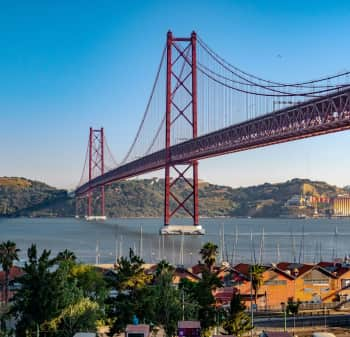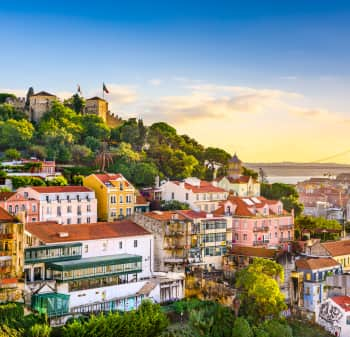
Running in the Évora District
unsplash.com/@brunogarcia
Upcoming Races in the Évora District




Fancy a short run in the Évora district?
Located in the Alentejo region, in the southern part of Portugal 🇵🇹, the Évora district is a true gem of Portugal's cultural heritage. With its rolling landscapes, endless vineyards 🍷, and whitewashed villages, it embodies the authenticity and serene lifestyle of the country's south.
We begin our journey in the district's capital, "Évora". Recognized as a UNESCO World Heritage site since 1986, it is home to over 53,000 residents. The city boasts over a thousand stories 📰, from the Celtic era to the present day. Évora is rich with remnants of the past, such as the Roman Temple of Évora, also known as the Temple of Diana, which has 14 columns and is one of the best-preserved Roman ruins in Portugal 🇵🇹. It even withstood the Visigoth invasion in the 5th century. Not far from there, the Cathedral of Évora, built between the 12th and 14th centuries, towers over the city with its imposing fortified towers. The University of Évora 🎓, founded in 1559, is one of the oldest in the country and a splendid example of Portuguese Mannerist architecture. If you're looking for something a bit more unusual, the Chapel of Bones (the most visited monument in Évora) is the place to go. Located in the Church of São Francisco, it's adorned with bones from over 5,000 human bodies 🫣.
The district of Évora is dotted with picturesque villages. One of the most famous is Monsaraz, a true gem perched on a hill offering breathtaking views of Europe's largest artificial lake, the Lake Alqueva 🚣♀️. Its cobbled streets and whitewashed houses give it a timeless charm. Not far away, Arraiolos is renowned for its craftsmanship, especially its hand-woven rugs, a tradition dating back to the 17th century. There's even a legend that Aladdin passed through Arraiolos (though this should be taken with a pinch of salt 😉). The district of Évora is also characterized by vast landscapes of golden plains situated between 200m and 400m altitude, bordered by cork oaks and ancient olive trees 🌲. These fertile lands produce some of Portugal's finest wines 🍷, particularly in the regions of Reguengos de Monsaraz and Redondo.
This is also one of the richest regions in Portugal for megalithic sites. The Cromlech of the Almendres, situated a few kilometers from the city of Évora, is a complex of over 90 standing stones arranged in a circle, dating back over 7,000 years. Considered the "Portuguese Stonehenge," this site fascinates with its mystery and precise astronomical alignment 🔭. Other sites, like the Zambujeiro Dolmen, one of the largest in Europe, or the Menhir of Meada, also contribute to the region's mystical aura.
For food enthusiasts, Alentejo is renowned for its simple yet flavorful cuisine, based on high-quality local produce. Among the district's iconic dishes, you'll find the Açorda Alentejana: a soup made from bread, garlic, olive oil, and aromatic herbs, sometimes topped with a poached egg. Migas, a dish made from stale bread mixed with pork and seasonings. And then there's the Queijo de Évora, a sheep's cheese 🧀 with a pronounced flavor, often enjoyed with a glass of local red wine.
Finally, let's talk about running! 👟 In Évora itself, the Évora Half Marathon is the city's must-attend event. If you're a fan of road running, there are plenty of races in the region that allow you to discover the towns and villages of the district. Noteworthy ones include Che a Correr in Mora, and the Corrida Vila de Redondo in Redondo. Don't worry, if you're more into nature, the Evora Monte Trail Run, the Trilho Herdade dos Hospitais, or the Trail do Texugo (just to name a few) will surely delight you 😉.
Race Calendar for the Évora District
- Trilho Herdade dos Hospitais
Montemor-o-NovoTrail & Walking - 17 km, 10 km, 7 km
- Night Run – Vendas Novas
Vendas NovasRoad Running - 4 km, 7 km
- CHE a Correr
MoraRoad Running & Walking - 9 km, 6 km
- Natur Race - Farmácia dos Álamos
Santa Maria de MachedeTrail & Walking - 12 km, 21 km, 8 km
- Sharish Monsaraz Natur Trail
Reguengos de MonsarazTrail - 50 km, 31 km, 20 km, 10 km, 105 km
These nice race spots should get your attention
This could also be of interest to you
The new generation platform that allows all runners, whatever their level, to (re)discover the French territory and heritage, by finding the races that suit them.
Made in France, between Lyon and Nantes



